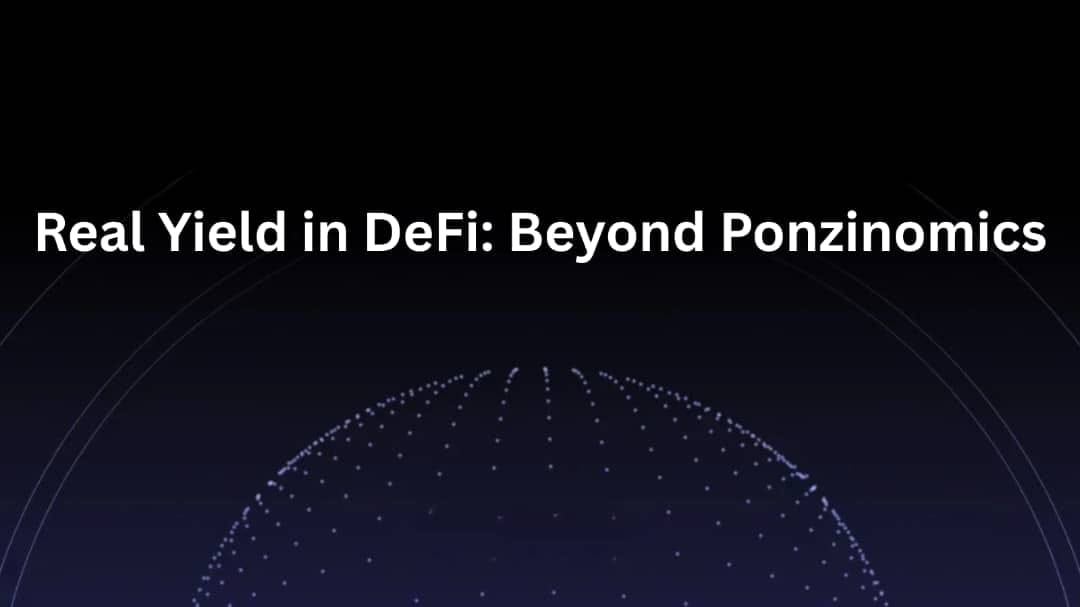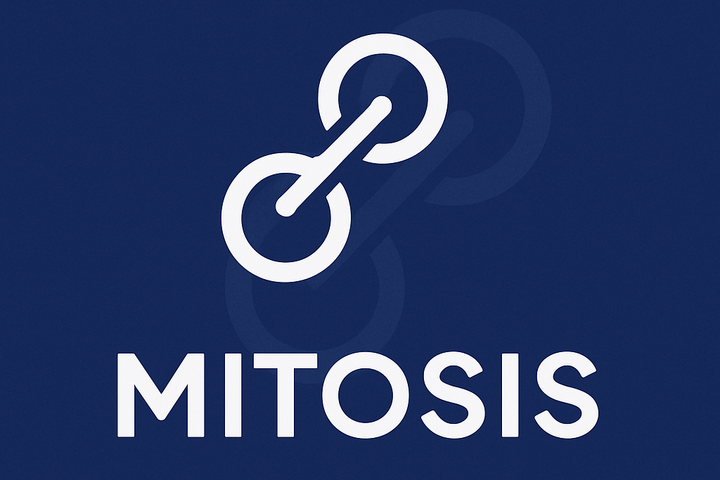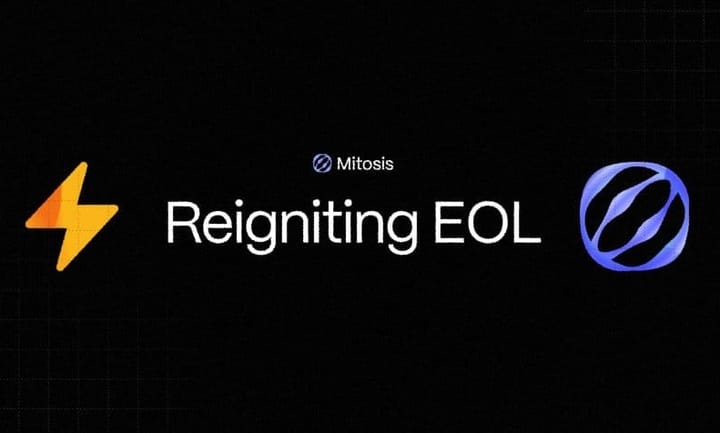Real Yield in DeFi: Beyond Ponzinomics

Introduction
Decentralized Finance (DeFi) has revolutionized the financial landscape, offering innovative solutions that challenge traditional banking systems. However, as the DeFi ecosystem has grown, so too have concerns about the sustainability of its yield-generating mechanisms. The term "real yield" has emerged as a critical concept, representing sustainable revenue generation from genuine economic activities, in stark contrast to "Ponzinomics," which often relies on unsustainable token inflation. This article delves into the intricacies of real yield in DeFi, exploring various revenue-generating mechanisms, including liquid staking tokens (LSTs) and options vaults, while examining their token incentive designs and long-term viability.
1. Understanding Real Yield
1.1 Definition of Real Yield
Real yield refers to the profits generated from actual economic activities within DeFi protocols. Unlike traditional yield farming, which often relies on token emissions or incentives, real yield is derived from user interactions, such as transaction fees, loan interests, and other forms of economic engagement.
1.2 Key Characteristics of Real Yield
- Tangible Activities: Real yield is generated from real user engagement within the protocol, such as trading, lending, and borrowing.
- Revenue Allocation: It is distributed to token holders and liquidity providers based on actual revenue generated by the protocol, rather than through inflationary token emissions.
- Sustainability: Real yield correlates with the real-world utility of the protocol, ensuring long-term viability and resilience against market fluctuations.
1.3 Importance of Real Yield
The significance of real yield lies in its potential to create a more sustainable DeFi ecosystem. As users become more discerning about where they invest their capital, protocols that can demonstrate genuine value creation will likely attract more users and liquidity. This shift towards real yield is essential for the long-term health of the DeFi space, as it encourages responsible practices and mitigates the risks associated with speculative investments.
2. The Mechanics of Ponzinomics
2.1 Definition of Ponzinomics
Ponzinomics refers to a model where returns for early investors are primarily funded by the capital of new investors. This structure is inherently unsustainable, relying on continuous inflow of new funds to maintain high yields. Ponzinomics often manifests in projects that promise exorbitant returns without a clear explanation of how those returns are generated.
2.2 Characteristics of Ponzinomics
- High Returns: Ponzinomic projects often advertise high returns that are not backed by actual profits, creating an illusion of profitability.
- Market Vulnerability: These models are sensitive to shifts in market sentiment, leading to potential collapse when new investments dry up.
- Complex Structures: Ponzinomic projects often obscure their mechanics with complicated reward systems and aggressive incentives, making it difficult for investors to understand the underlying risks.
2.3 Risks Associated with Ponzinomics
Investing in Ponzinomic projects poses significant risks, including:
- Loss of Capital: As the model relies on new investments, early investors may lose their capital when the influx of new funds slows down.
- Regulatory Scrutiny: Ponzinomic structures may attract regulatory attention, leading to potential legal issues for the project and its investors.
- Market Manipulation: The reliance on new capital can lead to market manipulation, where insiders benefit at the expense of retail investors.
3. Transparency and Risk Awareness in DeFi
3.1 The Role of Transparency
Transparency is essential for distinguishing between real yield and Ponzinomics. Protocols focusing on real yield typically provide clear metrics on revenue generation and distribution, allowing investors to make informed decisions.
3.2 Importance of Transparency
- Sustainability Assessment: Transparency enables investors to evaluate the sustainability of returns and the underlying economic activities driving those returns.
- Accountability: Clear communication fosters accountability among project teams, encouraging responsible practices and ethical behavior.
- Risk Mitigation: Transparency helps reduce risks associated with speculative investments by providing investors with the information they need to assess potential pitfalls.
3.3 Tools for Assessing Transparency
Investors can utilize various tools and resources to assess the transparency of DeFi protocols, including:
- On-chain Analytics: Platforms like Dune Analytics and Nansen provide insights into transaction volumes, user engagement, and revenue generation.
- Audit Reports: Independent audits from reputable firms can help verify the security and integrity of a protocol's smart contracts.
- Community Engagement: Active community discussions on platforms like Discord and Telegram can provide valuable insights into a project's operations and governance.
4. The Shift Towards Sustainable Finance
4.1 Evolving User Demands
The DeFi landscape is evolving, with users increasingly demanding sustainable and transparent financial products. As the market matures, protocols that prioritize real yield are better positioned to withstand market volatility and regulatory scrutiny.
4.2 Future of DeFi
- Economic Fundamentals: The emphasis will shift towards creating value based on economic fundamentals rather than speculative hype.
- Regulatory Oversight: Increased scrutiny on Ponzinomic structures will lead to a more regulated environment, encouraging responsible practices.
- Long-term Value Creation: Protocols that focus on sustainable growth and real yield will likely thrive, while those relying on Ponzinomics may face increased challenges.
4.3 Case Studies of Successful Real Yield Protocols
- Lido Finance: Lido is a liquid staking solution that allows users to stake their assets while maintaining liquidity. By generating yield from staking rewards, Lido provides a sustainable income stream for users.
- Yearn Finance: Yearn aggregates various yield farming strategies, optimizing returns for users based on market conditions. Its focus on real yield has attracted significant capital and user engagement.
- Aave: Aave is a decentralized lending protocol that generates revenue from interest on loans. By allowing users to lend their assets, Aave creates a reliable income stream based on borrower demand.
5. Identifying Unsustainable Models
5.1 Red Flags for Unsustainable Projects
Investors should be cautious of projects that offer excessively high Annual Percentage Yields (APYs), as these often indicate unsustainable token inflation rather than genuine profitability. Here are some red flags to watch for:
- Vague Yield Sources: Projects that do not clearly explain how yields are generated may be hiding unsustainable practices.
- Heavy Reliance on Native Tokens: If a project heavily depends on its native token for rewards, it may indicate a Ponzinomic structure.
- Discrepancy in Returns: High returns that do not align with actual economic activity should raise concerns about the project's sustainability.
5.2 Conducting Due Diligence
Investors should conduct thorough due diligence before investing in any DeFi project. This includes:
- Researching the Team: Investigate the backgrounds and track records of the project team to assess their credibility and experience.
- Analyzing Tokenomics: Understand the tokenomics of the project, including supply, distribution, and incentives for holders and liquidity providers.
- Evaluating Community Sentiment: Engage with the community to gauge sentiment and gather insights about the project's operations and governance.
6. Exploring Revenue-Generating Mechanisms
1. Liquid Staking Tokens (LST)
Liquid staking tokens allow users to stake their assets while still maintaining liquidity. This mechanism generates yield from staking rewards while enabling users to participate in other DeFi activities.
- How LSTs Work: When users stake their assets, they receive LSTs in return, which represent their staked assets. These tokens can be used in other DeFi protocols, allowing users to earn additional yield while still benefiting from staking rewards.
- Benefits of LSTs: LSTs provide users with the best of both worlds—earning staking rewards while maintaining liquidity and flexibility in their investment strategies.
2. Options Vaults
Options vaults provide a way to earn yield through options trading strategies. By utilizing various strategies, these vaults can generate consistent returns based on market conditions.
- How Options Vaults Work: Users deposit assets into an options vault, which employs various trading strategies to generate yield. The vault may sell options, hedge positions, or engage in other trading activities to maximize returns.
- Benefits of Options Vaults: Options vaults can provide a more stable yield compared to traditional yield farming, as they are less reliant on market volatility and can generate returns in various market conditions.
3. Decentralized Exchanges (DEXs)
Decentralized exchanges generate revenue through transaction fees. Users providing liquidity earn a share of these fees, creating a sustainable yield model based on actual trading activity.
- How DEXs Work: Users can trade assets directly on a DEX without the need for intermediaries. Liquidity providers contribute assets to liquidity pools, earning a portion of the transaction fees generated by trades.
- Benefits of DEXs: DEXs promote decentralization and user empowerment, allowing individuals to trade assets without relying on centralized exchanges.
4. Lending Protocols
Lending platforms generate yield from interest on loans. By allowing users to lend their assets, these protocols create a reliable income stream based on borrower demand.
- How Lending Protocols Work: Users deposit assets into a lending protocol, which then lends those assets to borrowers. In return, lenders earn interest on their deposits, creating a sustainable yield model.
- Benefits of Lending Protocols: Lending protocols provide users with a straightforward way to earn yield while contributing to the overall liquidity of the DeFi ecosystem.
7. The Role of Governance in DeFi
7.1 Importance of Governance
Governance plays a crucial role in the sustainability of DeFi protocols. Decentralized governance allows token holders to participate in decision-making processes, influencing the direction and operations of the protocol.
7.2 Governance Models
- Token-Based Governance: Many DeFi protocols utilize token-based governance, where token holders can vote on proposals and changes to the protocol. This model encourages community engagement and accountability.
- Multi-Signature Governance: Some protocols employ multi-signature wallets, requiring multiple signatures from trusted individuals to execute significant changes. This model enhances security and reduces the risk of malicious actions.
7.3 Challenges of Governance
While decentralized governance offers numerous benefits, it also presents challenges, including:
- Voter Apathy: Low participation rates in governance votes can lead to decisions that do not reflect the community's interests.
- Centralization Risks: If a small group of token holders controls a significant portion of the voting power, it can lead to centralization and undermine the principles of decentralization.
8. The Future of Real Yield in DeFi
8.1 Trends to Watch
As the DeFi landscape continues to evolve, several trends are likely to shape the future of real yield:
- Increased Institutional Participation: As institutional investors enter the DeFi space, there will be a greater emphasis on sustainable and transparent yield-generating mechanisms.
- Regulatory Developments: Regulatory frameworks will likely evolve to address the challenges posed by Ponzinomics and promote responsible practices within the DeFi ecosystem.
- Innovative Financial Products: The demand for real yield will drive the development of new financial products and services that prioritize sustainability and transparency.
Conclusion: The Path Forward
The future of DeFi lies in fostering real yield mechanisms that prioritize sustainability and transparency. As the market matures, protocols that can demonstrate genuine value creation will likely thrive, while those relying on Ponzinomics may face increased scrutiny and potential failure.
Investors must remain vigilant, conducting thorough due diligence and seeking out projects that prioritize real yield. By doing so, they can contribute to the development of a more sustainable and resilient DeFi ecosystem.
Resources for Further Reading



Comments ()